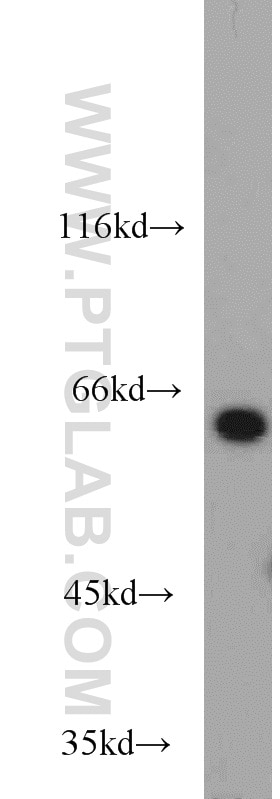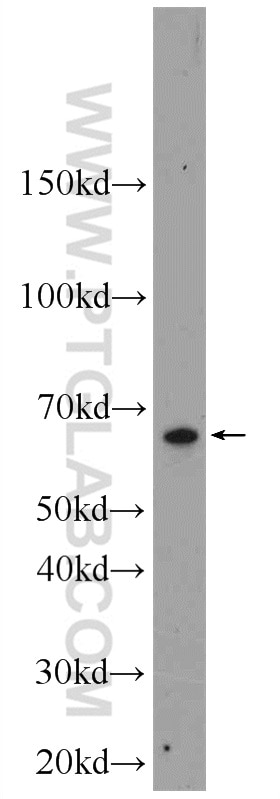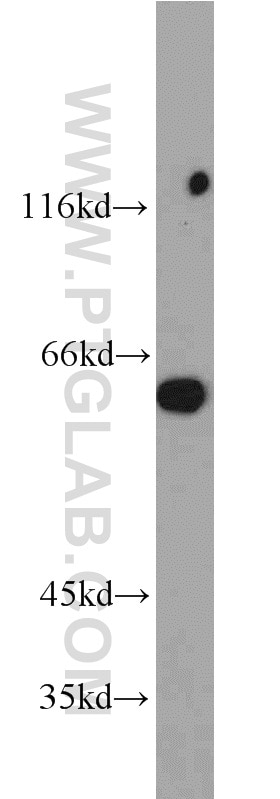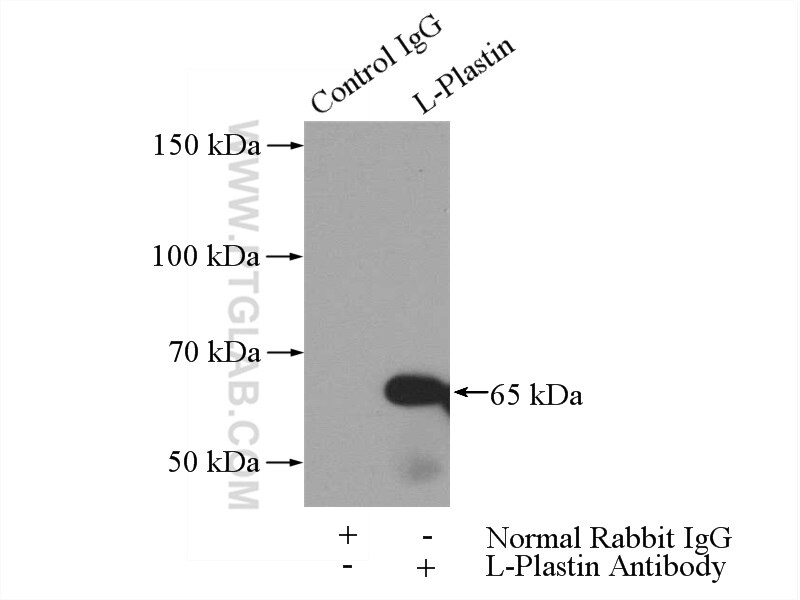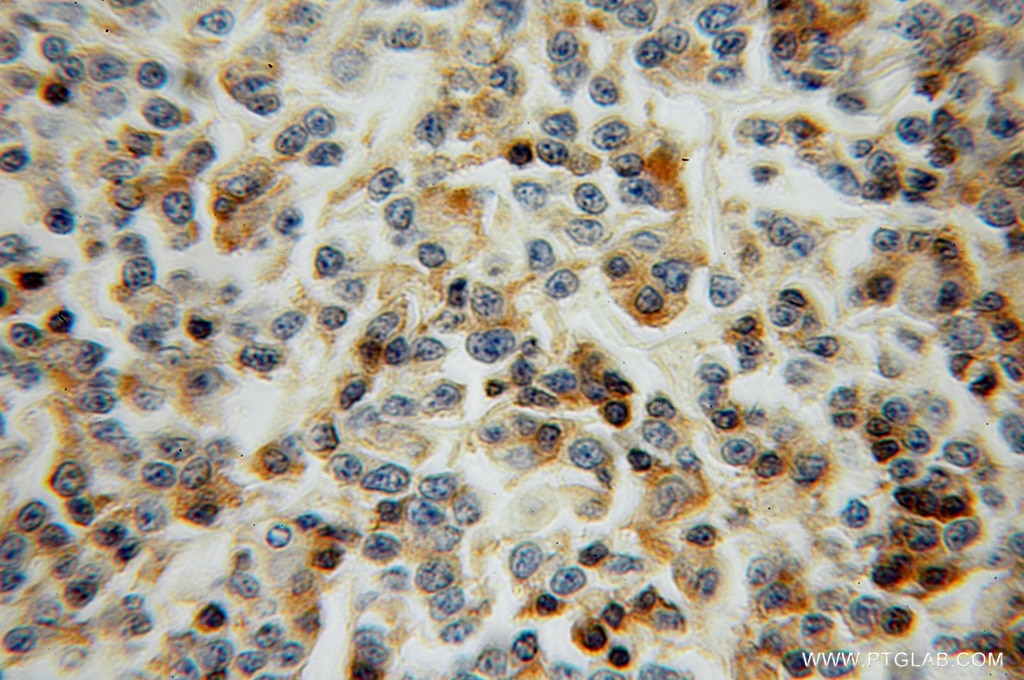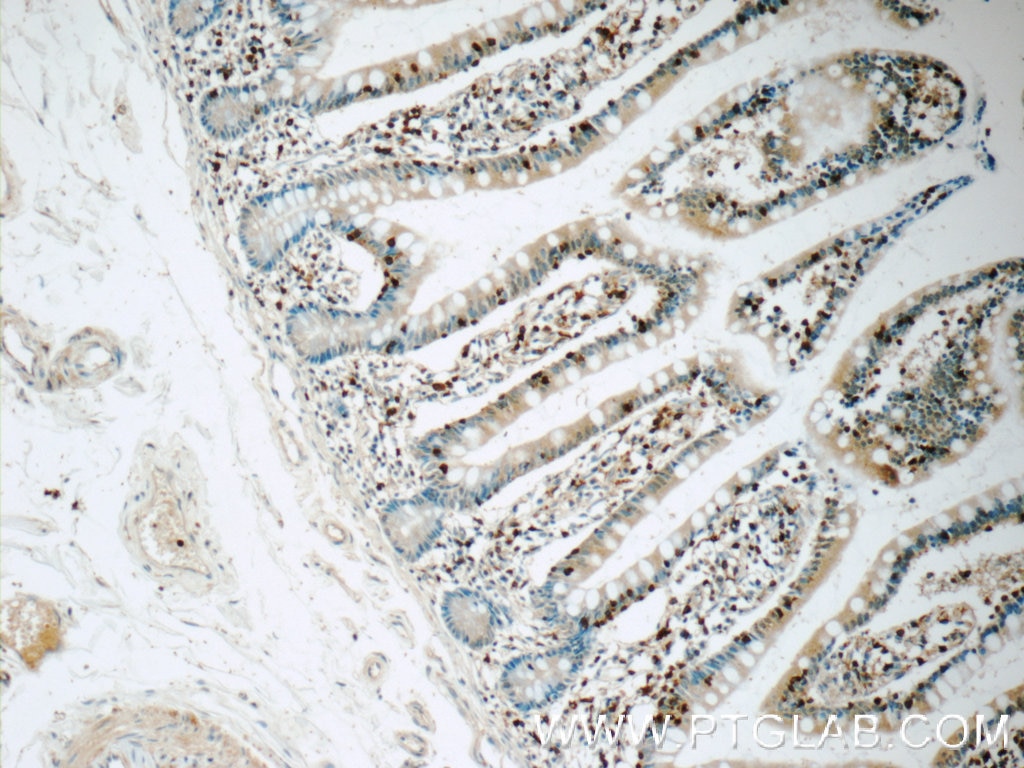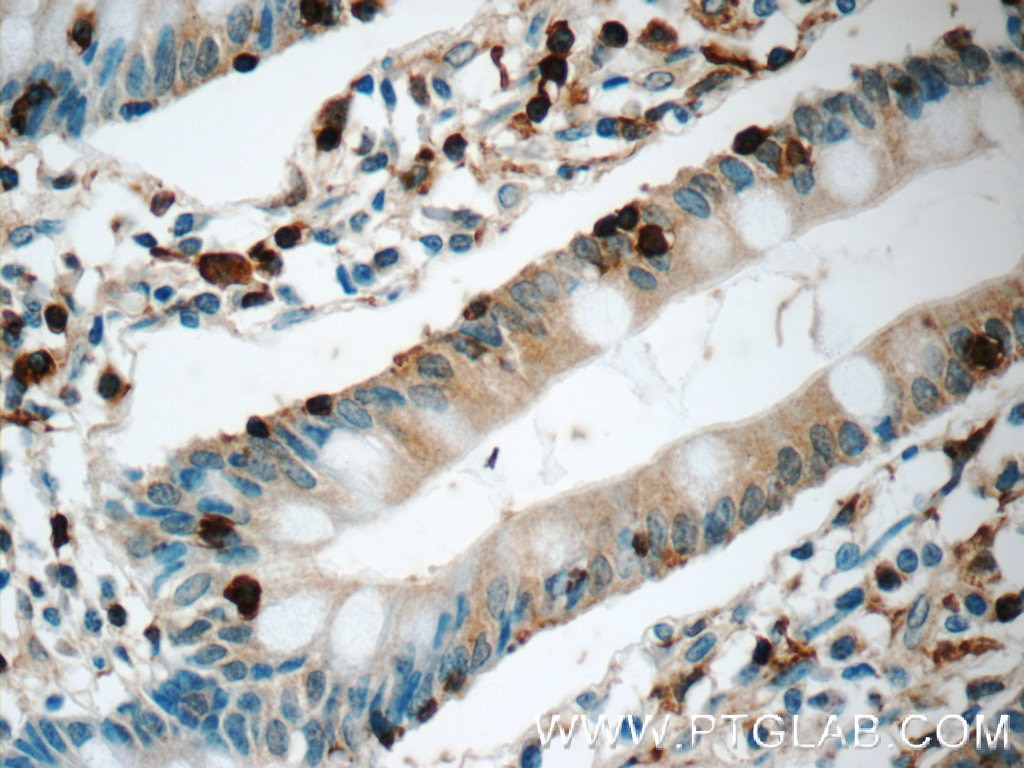- Featured Product
- KD/KO Validated
L-Plastin Polyklonaler Antikörper
L-Plastin Polyklonal Antikörper für WB, IHC, IP, ELISA
Wirt / Isotyp
Kaninchen / IgG
Getestete Reaktivität
human, Maus, Ratte und mehr (3)
Anwendung
WB, IHC, IF, IP, ELISA
Konjugation
Unkonjugiert
Kat-Nr. : 13025-1-AP
Synonyme
Geprüfte Anwendungen
| Erfolgreiche Detektion in WB | Jurkat-Zellen, K-562-Zellen, Mausmilzgewebe |
| Erfolgreiche IP | Jurkat-Zellen |
| Erfolgreiche Detektion in IHC | humanes Lymphomgewebe, humanes Dünndarmgewebe Hinweis: Antigendemaskierung mit TE-Puffer pH 9,0 empfohlen. (*) Wahlweise kann die Antigendemaskierung auch mit Citratpuffer pH 6,0 erfolgen. |
Empfohlene Verdünnung
| Anwendung | Verdünnung |
|---|---|
| Western Blot (WB) | WB : 1:500-1:2000 |
| Immunpräzipitation (IP) | IP : 0.5-4.0 ug for 1.0-3.0 mg of total protein lysate |
| Immunhistochemie (IHC) | IHC : 1:20-1:200 |
| It is recommended that this reagent should be titrated in each testing system to obtain optimal results. | |
| Sample-dependent, check data in validation data gallery | |
Veröffentlichte Anwendungen
| KD/KO | See 1 publications below |
| WB | See 6 publications below |
| IHC | See 4 publications below |
| IF | See 1 publications below |
Produktinformation
13025-1-AP bindet in WB, IHC, IF, IP, ELISA L-Plastin und zeigt Reaktivität mit human, Maus, Ratten
| Getestete Reaktivität | human, Maus, Ratte |
| In Publikationen genannte Reaktivität | human, Affe, hamster, Maus, Zebrafisch |
| Wirt / Isotyp | Kaninchen / IgG |
| Klonalität | Polyklonal |
| Typ | Antikörper |
| Immunogen | L-Plastin fusion protein Ag3571 |
| Vollständiger Name | lymphocyte cytosolic protein 1 (L-plastin) |
| Berechnetes Molekulargewicht | 627 aa, 64 kDa |
| Beobachtetes Molekulargewicht | 64-70 kDa |
| GenBank-Zugangsnummer | BC010271 |
| Gene symbol | L-Plastin |
| Gene ID (NCBI) | 3936 |
| Konjugation | Unkonjugiert |
| Form | Liquid |
| Reinigungsmethode | Antigen-Affinitätsreinigung |
| Lagerungspuffer | PBS with 0.02% sodium azide and 50% glycerol |
| Lagerungsbedingungen | Bei -20°C lagern. Nach dem Versand ein Jahr lang stabil Aliquotieren ist bei -20oC Lagerung nicht notwendig. 20ul Größen enthalten 0,1% BSA. |
Hintergrundinformationen
LCP1, also known as L-Plastin, is a member of the Plastin gene family. The family members include L-Plastin (LCP1), T-Plastin (PLS3), and I-Plastin (PLS1), which can regulate the dynamic reorganization of the cytoskeleton by binding and cross-linking actin filaments. In lymphocytes, LCP1 can regulate immune responses, especially during inflammation and infection. It acts as a key regulator of T-cell activation by responding to co-stimulatory signals through TCR/CD3 and CD2 or CD28, and regulates the cell-surface expression of IL2RA/CD25 and CD69 (PMID: 17294403).
Protokolle
| PRODUKTSPEZIFISCHE PROTOKOLLE | |
|---|---|
| WB protocol for L-Plastin antibody 13025-1-AP | Protokoll herunterladen |
| IHC protocol for L-Plastin antibody 13025-1-AP | Protokoll herunterladenl |
| IP protocol for L-Plastin antibody 13025-1-AP | Protokoll herunterladen |
| STANDARD-PROTOKOLLE | |
|---|---|
| Klicken Sie hier, um unsere Standardprotokolle anzuzeigen |
Publikationen
| Species | Application | Title |
|---|---|---|
Sci Signal A hepatokine derived from the ER protein CREBH promotes triglyceride metabolism by stimulating lipoprotein lipase activity | ||
Mol Ther Nucleic Acids Exosomal Transfer of LCP1 Promotes Osteosarcoma Cell Tumorigenesis and Metastasis by Activating the JAK2/STAT3 Signaling Pathway. | ||
J Cell Sci Iterative Bleaching Extends Multiplexity (IBEX) facilitates simultaneous identification of all major retinal cell types | ||
Cancer Biomark LCP1 is a prognostic biomarker correlated with immune infiltrates in gastric cancer | ||
Drug Dev Res Therapeutic role of Artemether in the prevention of hepatic steatosis through miR-34a-5p/PPARα pathway | ||
